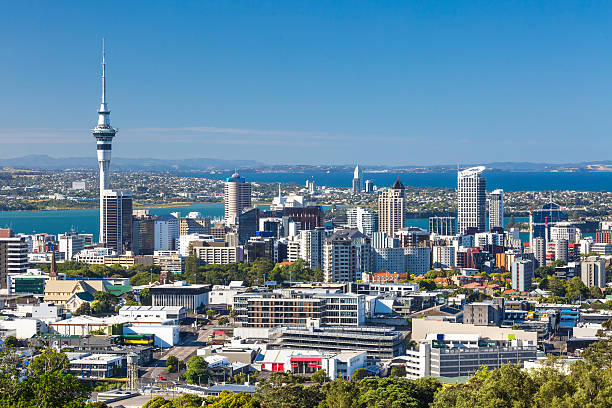Sierra Leone Travel Guide: All you need to know to visit Sierra Leone in 2025
Welcome to Sierra Leone
Welcome to Sierra Leone
West African beach paradise Sierra Leone is unexplored. Beautiful beaches emerge from the calm waters of the Atlantic, their surroundings a backdrop of sun-kissed hues, the green of the rain forest, and the crimson of the northern motorways. Here is the most complete travel guide to Sierra Leone, complete with tips and itinerary suggestions.
Document checklist Sierra Leone
- Visa (if applicable)
- Valid passport
- Sufficient funds to cover your trip
- Yellow fever vaccination certificate
Essential Sierra Leone travel information
Currency – Sierra Leone uses the leone (SLL) as its currency. Approximately 19,750 SLL is equal to 1 USD.
Daily budget for 1 person – USD 50 (SLL 1,079,560).
Languages – Krio is extensively used as the lingua franca even though English is the official language of the government, the media, and the educational system.
Socket type – D and G types. 50Hz and 230V supply voltage are used in Sierra Leone.
Top 3 major cities to visit – Freetown, Bo, and Kenema.
The top 3 landmarks/monuments are Martello Tower, Banana Islands, and De Ruyter Stone.
Visa information for Sierra Leone
Foreign nationals visiting Sierra Leone typically need a visa to enter the nation. There are various visas available in Sierra Leone, including transit, business, and tourist visas.
Typical costs and budget for Sierra Leone
Daily spending – USD 50 (SLL 1,079,560).
Meals – USD 10 (SLL 215,912).
Transport – A short bus trip can cost roughly USD 10 (SLL 215,912), whereas a short cab journey inside the city can cost around USD 5 (SLL 108,014).
Hotel – USD 20 (SLL 432,059) per night.
Two persons should budget around USD 700 (SLL 15,122,082) weekly.
Transport and best ways to travel around Sierra Leone
The Trans-Guinea Highway, which connects Freetown with Conakry, the nation’s capital, is the principal route between Sierra Leone and Guinea. The Mano River Union Road, now under construction, connects Freetown with Monrovia, the Liberian capital.
However, traveling from Abidjan to Freetown through Guinea is feasible even though there is no direct road connection between Sierra Leone and Côte d’Ivoire.
Although only sometimes the safest option, local taxis are the most common transportation between cities.
Typically, a minibus or similar vehicle is used, jam-packed with everything from passengers and their belongings to food and cattle.
While traveling in a poda-poda is a unique experience, some visitors may be put off by the hostile surroundings. However, transportation is reasonably priced, and you can get there fast.
The moto-taxi, a straightforward motorbike that picks up individual passengers along the road, provides an option for lone travelers. Prices are fair, and these cars also benefit from avoiding gridlock.
With an international driving license, enjoying a private automobile in Sierra Leone is possible. Although there are no global automobile rental companies, several local car rental companies provide trustworthy services. These rentals can be arranged through big hotels or travel companies in the larger city centers.
Safety in Sierra Leone
Travelers should take extra precautions owing to crime and civil upheaval, even though Sierra Leone is generally a safe place to visit. In Sierra Leone, especially in the central city of Freetown, violent crimes, including robberies and assaults, routinely happen.
The following tips will ensure that you travel securely throughout the nation:
Learn about the local laws and customs, particularly those related to attire, conduct, and social interactions.
For the latest security and safety issues, watch your local media.
Keep a watch on your possessions and avoid carrying a lot of cash since petty crimes like theft and pickpocketing can happen in popular spots like Lumley Beach and Aberdeen in Freetown.
Travelers to Sierra Leone are strongly advised to get medical travel insurance to cover the expenses of any necessary foreign medical care, including access to medical facilities, medical evacuation, and essential medical services.
Weather in Sierra Leone
Travelers should visit Sierra Leone during the country’s dry season between November and April. Due to the often sunny and dry weather, this is the appropriate time for outdoor pursuits like hiking, beach trips, and wildlife viewing. In addition, amid the mid-70s to the mid-80°F range, the temperatures are also more comfortable.
Typically, Sierra Leone’s rainy season lasts from May to October. During this period, heavy rainfall and sporadic flooding are expected. In addition, the wet weather may make several routes and tourist destinations impassable.
Must do and see in Sierra Leone
At the Outamba-Kilimi National Park: elephants, chimpanzees, and leopards are among the many animals that call a protected region home. The country’s animals and natural beauty are available for tourists to explore.
The capital city of Freetown is home to the well-known beach Lumley Beach. It’s a beautiful spot for swimming and sunbathing, with breathtaking views of the Atlantic Ocean.
During the transatlantic slave trade, Bunce Island, a historical location, was a significant slave-trading hub. Those interested in African ancestry must go there since it provides a window into the nation’s turbulent past.
Typical Sierra Leonean food to try
A typical meal in Sierra Leone is groundnut stew, often peanut stew. Usually eaten with rice or fufu, a starchy flatbread produced from cassava or yams, it is created with a peanut butter foundation and has a peanut butter basis.
Cassava leaves are a typical side dish for rice in Sierra Leone and are a staple meal there. The leaves are cooked with spices, palm oil, and occasionally groundnut paste to create a substantial and savory stew.
Sierra Leone is the perfect place to enjoy the well-known West African cuisine of jollof rice. This one-pot recipe includes rice, tomatoes, onions, and several spices. It frequently goes with meat or chicken.
Vaccine information for Sierra Leone
Due to the significant danger of yellow fever transmission in Sierra Leone, all visitors older than nine months must present their yellow fever vaccine documentation.
Related Articles

5 min read
New Zealand Introduces Key Changes to Post Study Work Visa : What You Should Know
According to the government, this change will provide students with greater flexibility in their academic choices while ensuring they remain eligible to work. For many students, studying abroad is a
Read More
5 min read
The Singapore visa processing time for Indian citizens
Singapore is a small island located in the Malay Peninsula in Southeast Asia. It is one of the most economically developed countries in the world. Singapore is a fantastic place
Read More
5 min read
How Much Does an Australia Trip Cost from India?
If you are planning a trip from India to Australia, you must follow some of the points. that are : Planning Budget Traveling date and time To which place you
Read MoreYes. Before visiting the Republic of Sierra Leone, Indian nationals must get a visa. There isn’t a Sierra Leonean embassy in India. Therefore, all candidates coming to this nation must submit a visa application at the Sierra Leone Embassy in China.
No. Before arriving in Sierra Leone, Indian tourists are required to get a visa. Indian nationals cannot use the visa-on-arrival service.
The type of entry that is allowed must be carefully considered. For example, with a multiple-entrance visa, the holder is permitted to enter or depart Sierra Leone several times but only once with a single-entry visa.
Yes. Yellow fever vaccine is required for Sierra Leone visa applicants. The certificate proving the same must also be included alongside other supporting documentation.
